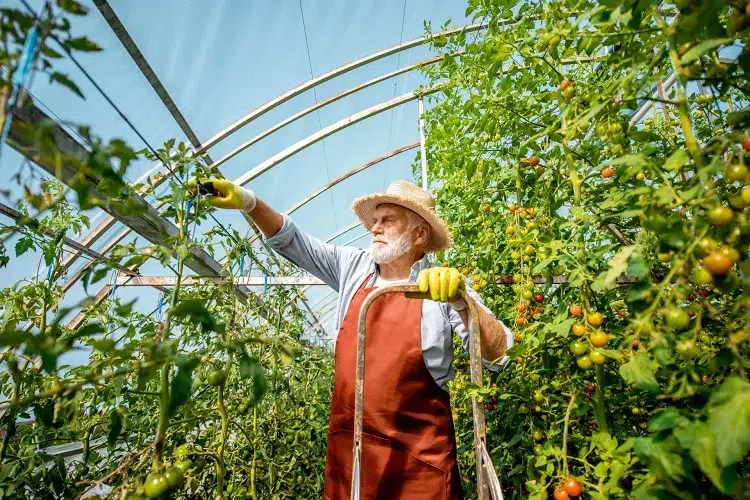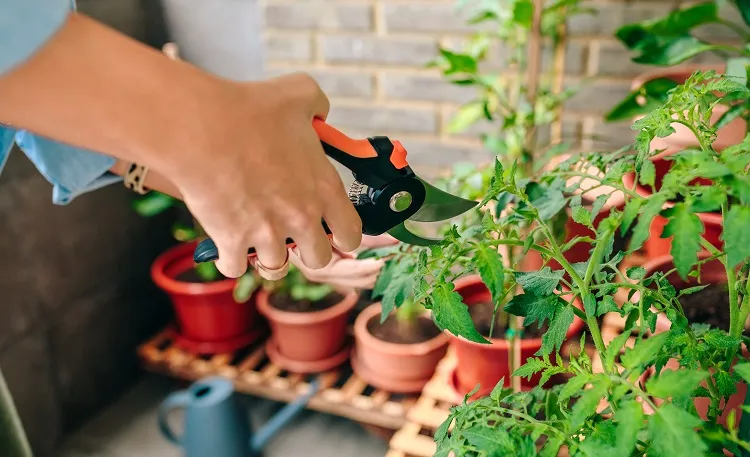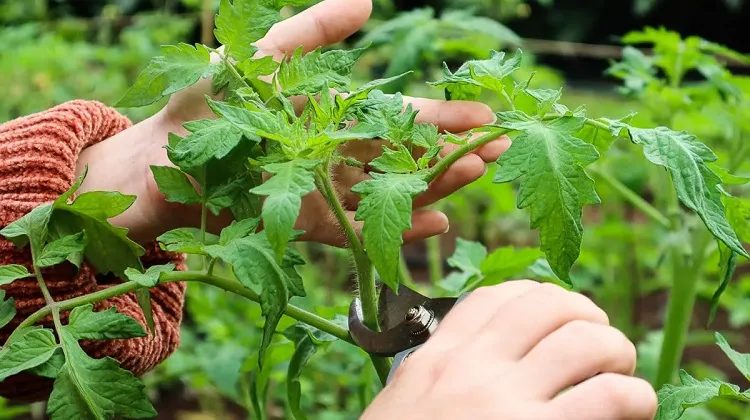In addition to pruning, there is one more method to increase your tomato production. We are talking about topping. But according to experts, this technique has advantages and disadvantages. What are they? How to cut off the top of tomatoes and is it really necessary? Let’s find out!
Cut Off The Top Of Tomatoes: What Are The Benefits?
There are many benefits when you cut off the tops of tomato plants. That is why this technique is widely used by many experienced gardeners. Usually it is applied at the end of the season, but the truth is that it can be applied all season long. Why? Here are the reasons listed below:
- You can cut off the top of tomatoes early in the season to facilitate branching and allow the plant to produce stronger central stems. It’s like cutting your hair. If you do this every month, they grow healthier. As for your vegetables, this will make the tomatoes more resistant to weather conditions such as wind and summer storms. Also, a stronger stem can support the weight of heavier fruits.
- You can also do the topping during the growing season. This will stimulate the plant to produce more flowers, which means more fruit. If you notice that there are few flowers at flowering time, you can redirect the plant’s energy to those flowers instead of using it for upward growth.
- Sometimes tomato plants can grow so tall that they pierce the greenhouse cover. That’s what happened in my grandfather’s garden, where he can’t reach and cut off the top of the plants. But you can do it. So think about limiting tomato growth. Having taller plants does not mean more fruit.
- At the end of the season, the weather begins to change and cool. At this point, tomatoes don’t ripen as quickly and sometimes remain green. The plant may still produce flowers, but they will never turn into fruit due to the cold. Instead of wondering how to make tomatoes ripen faster, cut off the top of the plant. All of the energy spent producing the stems, leaves and flowers will be used to ripen the fruits.
When to Cut Off the Top of Tomato Plants?
In short, the top of tomatoes can be cut off at the beginning, end and during the growing season. When you do this depends on the desired effect: having more resistant plants, making tomatoes ripen faster, or controlling growth.
How to Cut Off the Top of Tomatoes?
The most important thing is to disinfect the tools you use to avoid contaminating the plant with bacteria and fungi. It is also advisable to prune tomatoes in hot, dry weather. Rain can provoke the appearance of fungal diseases, so care should be taken to ensure that the plants are dry.
Then proceed to pruning. Early to mid-season, cut only the top few inches of the main stem. At the end of the season (September or October, depending on where you live), you can also remove a few leaves to let sun shine penetrate between the branches and allow the last tomatoes to ripen.
Also read: What Is the Best Mulch for Tomatoes? 6 Top Options to Consider
Cut Off the Top of Tomatoes: The Disadvantages
Obviously, the advantages are many, but what are the disadvantages? Before deciding how to care for your tomato plants, you need to consider all the consequences. After all, pruning is not mandatory. It’s just a way to control the development of tomatoes better.
So, once you’ve started pruning, you’ll need to do it every week, which can be very time-consuming. Otherwise, the plant will focus on wound healing and stem growth, rather than fruit.
Another problem can arise if you cut the “wrong” variety. Not all tomatoes like it. Some will simply stop growing, limiting your production instead of increasing it.
Which Tomato Varieties Can Be Pruned?
Tomatoes with indeterminate growth can be topped throughout the season if necessary, as they will continue to regrow. Beefheart, Goldie, most Cherry and heirloom tomatoes are examples of indeterminate tomatoes.
Also read: Why You Should Water Tomatoes with Milk – Advantages, Disadvantages, Recipe and Instructions




